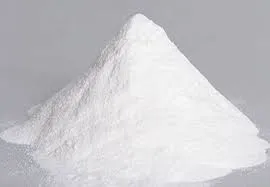
ਦਸੰ. . 03, 2024 21:45 Back to list
Understanding the Properties and Applications of Redispersible Polymer Powders in Construction
Understanding Redispersible Polymer Powders Applications, Benefits, and Future Perspectives
Redispersible polymer powders (RDPs) play a crucial role in various industries, particularly in construction, coatings, and adhesives. These versatile materials are typically derived from the spray-drying of aqueous polymer dispersions. Once dried, they appear as fine powders that can easily be redispersed in water, restoring their original properties. This article delves into the composition, applications, advantages, and future directions of redispersible polymer powders.
Composition and Properties
Redispersible polymer powders are primarily made from synthetic polymers such as ethylene-vinyl acetate (EVA), styrene-acrylic copolymers, and vinyl acetate-ethylene (VAE) copolymers. When mixed with water, these powders form stable emulsions, enabling effective adhesion, flexibility, and durability in various applications. The particle size, glass transition temperature, and polymer structure can be tailored to meet specific performance requirements.
The key properties of RDPs include excellent film-forming capabilities, adhesion to various substrates, water resistance, and improved mechanical properties. These characteristics make them indispensable in formulations for construction and building materials, where they enhance the performance of cementitious mixtures, wall coverings, and tile adhesives.
Applications
1. Construction Industry RDPs are extensively used in cement-based products like tile adhesives, mortar, and plaster. They enhance the flexibility, adhesion, and water resistance of these materials, making them more suitable for diverse environmental conditions. For example, in tile adhesives, RDPs enable the formulation to maintain its elasticity, accommodating movements and preventing cracking.
2. Coatings In the coatings industry, RDPs improve the film properties of paints and coatings, providing excellent adhesion, water repellency, and resistance to weathering. They are particularly beneficial in applications where versatility and durability are critical, such as exterior wall coatings and industrial finishes.
3. Adhesives The use of redispersible polymer powders in adhesive formulations enhances their adhesive strength and durability. This is particularly valuable in the production of construction adhesives, where strong bonds are essential for ensuring the longevity of materials.
redispersible polymer powder

4. Textiles RDPs are also utilized in the textile industry as binders for non-woven fabrics and coatings, contributing to superior performance properties while ensuring that the final products remain flexible and breathable.
Benefits
The advantages of using redispersible polymer powders are numerous
- Versatility RDPs can be used in a wide range of formulations, adjusting the properties to meet specific performance criteria. - Enhanced Performance They enhance critical attributes such as adhesion strength, flexibility, and water resistance, significantly improving the longevity and performance of the final products. - Ease of Use Being in powder form, RDPs are easy to transport, store, and handle, and they can be incorporated into various formulations without the need for sophisticated equipment. - Cost-Effectiveness By improving material properties, RDPs help reduce the overall cost of formulations by increasing efficiency and durability.
Future Perspectives
As industries strive for sustainability, the demand for environmentally friendly and high-performance materials continues to grow. The future of redispersible polymer powders lies in their ability to meet these market needs. Research is currently underway to develop bio-based RDPs and improve the performance of existing formulations through the incorporation of recycled materials.
Additionally, advancements in polymer technology could lead to the development of multifunctional RDPs that not only enhance adhesion and flexibility but also offer properties like antimicrobial resistance or self-cleaning capabilities. Such innovations could unlock new markets and applications, particularly in the health and safety sectors.
In conclusion, redispersible polymer powders represent a vital component in various industries, providing numerous benefits and enhanced performance attributes. As research and technology advance, the future looks promising for RDPs, paving the way for even more innovative applications that align with the evolving needs of the market. As we embrace these changes, the role of RDPs will undoubtedly expand, highlighting their importance in modern material science.
-
Unlocking the Benefits of HPMC Products: A Gateway to Versatile Applications
NewsAug.07,2025
-
Unleashing the Potential of HPMC Ashland: A Comprehensive Look
NewsAug.07,2025
-
Tile Bonding Cellulose: The Key to Superior Adhesion and Durability
NewsAug.07,2025
-
Hydroxypropyl Methylcellulose Powder: The Versatile Component in Modern Pharmaceuticals
NewsAug.07,2025
-
Hydroxyethyl Cellulose: The Versatile Solution for Various Industries
NewsAug.07,2025
-
Hydroxyethyl Cellulose (HEC): The Versatile Polymer for Various Applications
NewsAug.07,2025







